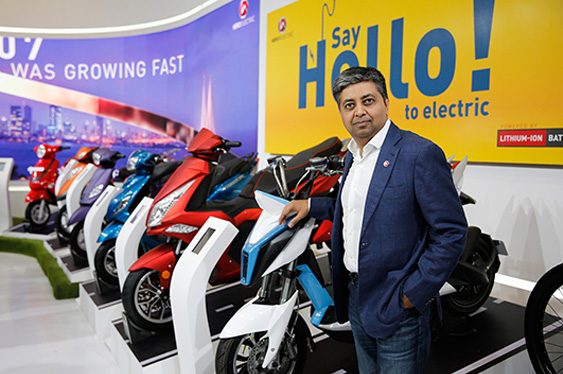Naveen Munjal is clearly upbeat about growth prospects for the electric two-wheeler market which could be “anything from about 12 million units going upward to about 30 million units (by 2030)”.
The Managing Director of Hero Electric tells Autocar Professional that he and his team look at both the “best and worst case” scenarios when making business plans. This becomes a key determinant for investments — and even for the worst case scenario, they still check if it “still makes sense or not” to go ahead with the plans.
It is this thinking that has convinced Hero Electric about the projections for two-wheelers. Even if 30 percent of industry volumes go electric, this would translate into “about 10-12 million units” by 2030. On a more optimistic level, the 30 million mark is attainable if the entire two-wheeler buyer base embraces e-mobility in the next decade.
A strong proponent of this commuter option, Munjal believes “we are going to fall somewhere in between”. Re-skilling local mechanics and setting up neighbourhood charging infrastructure are two key initiatives that will accelerate adoption of EVs.
“You could actually charge your vehicle in densely populated areas like vegetable markets where you go on a normal basis. Even a half hour charge would give you about 10-20 kilometres depending on the vehicle and battery,” he says.
According to Munjal, Hero Electric has trained over 5,000 PGOs (preferred garage owners) in the last two years and intends increasing that to 20,000 in the same time span. These PGOs can also service competitors’ models and there is a reason for doing this as he elaborates.
When the Indian EV industry crashed a decade ago, the rupee had depreciated and crude oil prices fell to below $40 a barrel from nearly $140. “At that time, people wondered why they needed to buy an electric vehicle,” recalls Munjal. This was fuelled by the withdrawal of a subsidy scheme from the Ministry of New and Renewable Energy in 2012 that led to many EV makers scaling or shutting down operations.
“If you are in a neighbourhood with five dealerships and four are shutting down, it does not inspire confidence within customers,” says Munjal while recollecting a tough period when he, as the head of the Society of Manufacturers of Electric Vehicles, had appealed to EV makers not to pull out.
Yet, not everyone could sustain their business and Hero Electric asked its dealerships to service competitors’ vehicles too simply “because it was extremely important for the industry to survive”. Munjal carried on with the Hero Electric story (his third attempt in the e-mobility space) during this phase and other challenging periods.
Today, he is contemplating taking the Hero brand to other EV markets overseas. “It is very important to be agile whenever you are creating a new industry and trying to disrupt. You also need to believe in your dreams,” he says. For now, Munjal’s top priority is to “minimum double” Hero Electric’s annual sales to touch the 100,000 unit mark this fiscal.

